Tags
Ash, birds, blackthorn, catkins, Christmas box, crocus, flying mallards, garden plants, goldfinch, hazel, hazel gall, horse chestnut, ice, iris reticulata, lichen, Mahonia, moon, pond, reflections, silver birch, song thrush, Suffolk, trees, winter-flowering honeysuckle, witch-hazel
This is a post featuring a few of the things I have noticed in our garden recently. A large part of the garden is exposed to the prevailing south-westerly wind and we find plants here are slower to grow and flower than those in other gardens near us. I have seen large carpets of Winter Aconites in other peoples gardens but there is no sign of them here at all. The beds around the house and near the hedge are more sheltered and this is where we see the first signs of spring.
I like the Ash’s black, conical buds – they look a little like deer hooves. So far, we haven’t found any sign of ‘Ash die-back’ in our garden yet. This is caused by the Hymenoscyphus fraxineus fungus. East Anglia is badly affected and has lost many of its Ash trees already.
While I was photographing these I looked up and found a Barn Owl was flying straight towards me. I don’t know who was more surprised, the owl or me! I tried to photograph it before it veered away from me but I couldn’t focus in time.
I wondered what these were on our hazel trees as I had never noticed them before. None of my books mentioned buds looking like this so I googled for information and discovered a photograph that looked like mine on ramblingsofanaturalist.blogspot.com. The author says that these are bud galls made by the mite Phytoptus avellanae. He also talks about unopened brown catkins which have been attacked by either the mite Phyllocoptes coryli or the Cedidomyid midge Contarinia coryli. I had also seen distorted brown catkins and had wondered about them too but had been unable to get a clear photo of them.
The Witch-hazel (Hamamelis) is flowering in its large pot next to the front door and on mild days fills the porch with scent.
This shrub Honeysuckle is a real favourite of mine. Its small flowers are powerfully scented and it flowers from mid-winter until well into spring hardly stopping except in the harshest of weathers. It is virtually evergreen and the flowers are followed by bright red heart-shaped berries loved by Blackbirds.

The Mahonia (Mahonia x media ‘Charity’) with its Lily-of-the-Valley scent has been flowering since the end of October.

I found some more – paler ones this time. I hope the birds don’t rip them up and the mole doesn’t dig them up.
Finally, here is the setting full moon seen on the morning of 4th February.
Happy Valentine’s Day to you all!


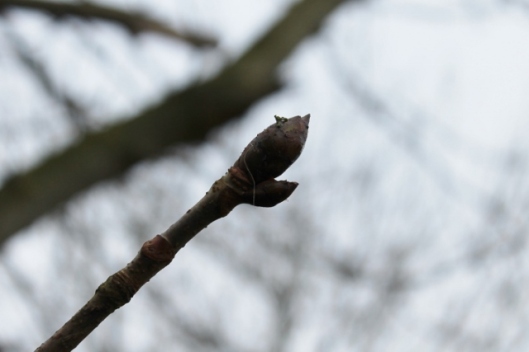


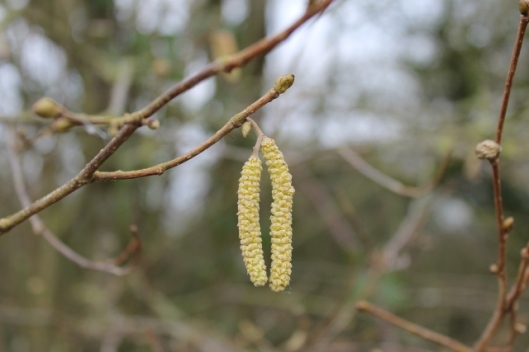





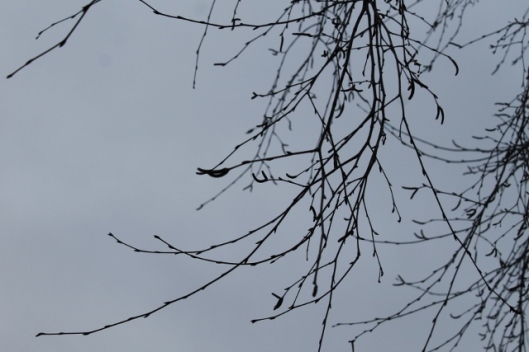

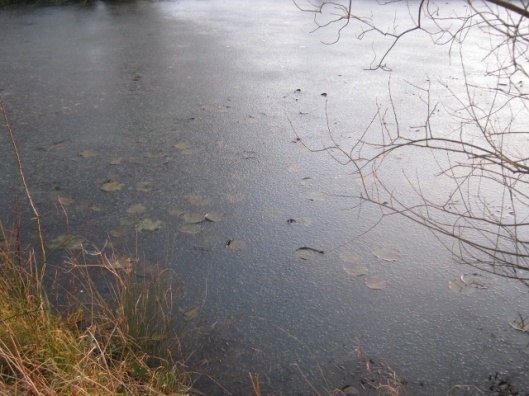












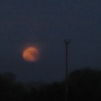
Beautiful photos, Clare. I love the reflection shot! Happy Valentine’s Day to you too!
LikeLiked by 1 person
Thank-you Jill!
LikeLike
How lovely to see all the sweet signs of spring. The iris looks very special.
LikeLiked by 1 person
Thank-you Ann. We haven’t had a bad winter but it has been very dreary and these spring flowers are a welcome sight.
LikeLiked by 1 person
Indeed!
LikeLiked by 1 person
I am fascinated by your winter blooming flowers! I hope that they will grow here.
LikeLiked by 1 person
So do I! I wouldn’t be without them. They don’t do so well during really cold winters but they soon recover and flower again.
LikeLike
Thank you for another informative post from your part of the world. I loved seeing the signs of spring appearing in your garden, especially the flowers! While we have a way to go yet before spring arrives here, seeing that it is coming to other parts of the world gives me hope that it won’t be that long before it arrives here.
LikeLiked by 1 person
It’s all bearable with a little hope to keep you going! Thank-you, Jerry!
LikeLike
You know it’s really spring when you see those tiny female hazel blossoms. They refuse to appear here until it’s warm enough.
It was great to see all the flowers. We just had another 8 inches of snow last night and it’s supposed to be below zero tonight so we won’t be seeing any here for a while yet.
That’s a beautiful iris and the lichens in the hedge are really colorful.
The shots of the setting moon were a good idea-something I’ve never thought of doing.
I hope you had a great Valentine’s day.
LikeLiked by 1 person
Thank-you Allen. Yes I had a really lazy day, didn’t go out in the car and my husband cooked the evening meal! I am hoping we don’t get any more really cold weather as the flowers will all suffer. The birds have all got spring fever too and are singing loudly.
LikeLike
Impressive moon shots.
LikeLiked by 1 person
Thank-you.
LikeLike
I really enjoyed your post today Clare, Spring is starting to make itself known, I had not realised you have two ponds, that must be very rewarding and your close encounter with an owl sounds exciting too.
LikeLiked by 1 person
Thank-you, Julie. In fact we have three ponds and deep ditches round most of the garden. The big pond looks after itself most of the time though last February we had the banks cleared and a lot of the willow removed. The small pond is in desperate need of renovation and is a
LikeLike
Ooops Sent before I had finished. It was dug by the previous owner and the lining need replacing etc. The third pond is in the corner of the garden and two of the ditches run into it.
LikeLike
Your garden sounds a haven for wildlife Clare. When we moved here we took out a huge concrete lined pond that was for Koi carp and as the water table is so high, putting in anything with a liner did not work. We are 15 metres from the nearest tributary and that was dredged a couple of years ago and so far we have not had any uprising water after lots of rain, so we are planning to try again with another small pond.
LikeLiked by 1 person
Dredging really works when it’s done regularly enough. Good luck with your pond.
LikeLike
Thanks Clare 🙂
LikeLiked by 1 person
What a magical garden you have and so tru…all year round a garden and Mother Nature has beauty to offer!
LikeLiked by 1 person
Thank-you! Mother Nature has contributed so much to our garden.
LikeLiked by 1 person
What a thrill of joy visiting your blog today.
To see all the signs of new life!
Your first iris reticulata, and the first flower-head of the crocus.
Please describe the scent of the witch hazel and honeysuckle for me. We are at least 7 to 8 weeks behind Suffolk – it’s so cold that our windows iced up yesterday — so you can’t imagine how pleased I am to be experiencing your early spring.
LikeLiked by 1 person
Poor you! Keep those thermals on! My goodness – describe the scent of witch -hazel and honeysuckle! I thought I’d better go out and see if I could smell anything before it gets dark. Unfortunately – no – the scent is always more noticeable on milder days and now it is dusk it is a little too cold. I have a cold in the head as well so that doesn’t help either. I will get back to you on this one! I have been meaning to ask – how is Hamlin? I hope he continues to improve in health. xx
LikeLiked by 1 person
Oh no! You went outside to sniff the flowers? and with a head cold, no less. Sorry I did that to you.
Get better soon, dear Clare! Thanks for the good wishes for my good man. Same for your family.
LikeLiked by 1 person
Thank-you Cynthia! It’s not really cold as you know it – well above freezing in fact!
LikeLiked by 1 person
Wow, the reflection of the sky on the pond is incredible and so clear! Great photos, Clare!
LikeLiked by 1 person
Thank-you very much, Bertie.
LikeLike
The pics of the full moon are wonderful… And those buds look promising indeed.
Beautiful post, dear Clare… Best regards to you and yours, Aquileana 🙂
LikeLiked by 1 person
Thank-you, dear Aquileana! Best wishes to you and yours too. Clare xx
LikeLiked by 1 person
Reblogged this on Nutshell.
LikeLike
Thank-you very much, Abhijan!
LikeLike